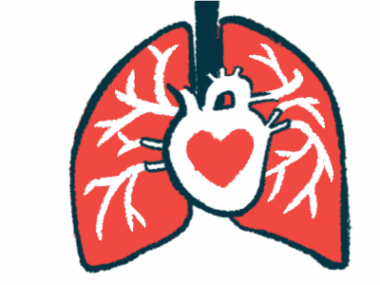HCP Is Hidden Cause of Psychiatric Changes in Man, 66: Case Report
Written by |

Undiagnosed hereditary coproporphyria (HCP) was the cause of psychiatric symptoms, including aggressive behaviors, delusions, and visual hallucinations, in a 66-year-old-man initially misdiagnosed with schizoaffective disorder, according to a recent case report.
“Nonspecific symptoms of acute porphyria can mimic many other diseases and lead to delayed diagnosis or misdiagnosis,” the researchers wrote, noting that “healthcare providers should be aware of the symptoms of acute porphyria in order to prevent poor outcomes and unnecessary procedures.”
The study, “Delirium with delayed diagnosis of hereditary coproporphyria,” was published in the journal Clinical Case Reports.
The symptoms of porphyria are broadly caused by enzyme deficiencies leading to the toxic buildup of molecules called porphyrins, and their precursors, in different parts of the body.
HCP is a porphyria subtype characterized by skin lesions and acute attacks that include pain, urinary or gastrointestinal issues, and an altered mental status. Such attacks are typically spurred on by environmental factors, such as stress or certain medications.
Mental alterations associated with HCP require prompt and special care given that many psychiatric medications are known to worsen porphyria symptoms.
The case described in the report involved an older Caucasian man — a renowned cartoon artist — who was treated at the emergency room for violent behavior.
Although awake and alert, the man appeared “in distress, agitated, and unable to be redirected,” the researchers wrote, adding that his behavior was “aggressive, with mixed delusions and visual hallucinations.” He also exhibited signs of limited cognition and rapid, pressured speech.
The man had a history of dementia, insomnia, and depression, but did not smoke, drink alcohol, or use recreational drugs. His medications included the vitamin B12 supplement cyanocobalamin, the anti-depressant fluoxetine, and the anti-psychotic olanzapine.
Crusted skin lesions were found on his hands and forearms, but no other significant physical findings were observed. Most blood test findings were normal, with the exception of low hemoglobin — a protein that helps transport oxygen through the body.
The patient was admitted to the hospital’s psychiatric unit with a diagnosis of bipolar type schizoaffective disorder. There, he was treated with a range of psychiatric medications. Despite treatment, his psychiatric presentation and aggressive behaviors progressively worsened, eventually requiring the use of restraints and additional sedative medications.
Other clinical problems also became apparent. A cardiac function test revealed an irregular and fast heartbeat, called atrial fibrillation, for which he was given a medication called amiodarone. He also began experiencing a high fever, had an elevated white blood cell count, and increased levels of aspartate transaminase, a liver enzyme. The man also developed inflammation-associated blood clots and blistering skin lesions on his upper limbs.
A wide array of laboratory tests revealed no signs of infection. Brain MRI and head CT scans showed signs of mild changes to the brain’s small blood vessels, and some brain tissue loss. He was treated with antibiotics under the belief that he had an infection from an unknown source.
At that time, the man’s urine samples turned brown — a hallmark feature of porphyria — and his wife reported that he had intermittently experienced skin lesions on his hands, as had his father. Urine and stool tests revealed that the man had significantly elevated levels of coproporphyrins, which are the porphyrin precursors that are elevated in HCP.
Together, these findings led researchers to suspect HCP.
Several medications the man had been given are known to worsen porphyria — namely, phenobarbital, valproic acid, trimethoprim-sulfamethoxazole, and amiodarone. These medications were stopped, and he was given glucose infusions to help manage dehydration.
The patient continued on medications that were considered safe for porphyria, including sotalol and apixaban for heart abnormalities, cyanocobalamin for vitamin B12 deficiency, and pantoprazole to prevent stress ulcers. Curtains were drawn to protect him from sunlight, which worsens HCP.
After several days, his psychiatric symptoms were resolved and his skin lesions improved. Upon discharge, the patient was advised to avoid sun exposure and medications that might worsen his symptoms, as well as to undergo genetic testing to support an HCP diagnosis, and see a hematologist to discuss treatment options.
After discharge, two further episodes were reported, both of which were short-lived and treated successfully with into-the-vein hemin, a treatment aimed to lower porphyrin levels.
According to researchers, the patient’s early misdiagnosis led to a worsening of his clinical condition.
“It is vital to suspect acute porphyria in a patient with unexplained neuropsychiatric symptoms for appropriate treatment and prevention of life-threatening complications,” they wrote.






